Topics
Category
Era
Fort Snelling in the Civil and US–Dakota Wars, 1861–1866
During the Civil War era, Fort Snelling served as an induction and training center for nearly twenty-five thousand soldiers. Many of them fought in the Civil War. Around fourteen hundred of the troops raised at the fort served in the US–Dakota War of 1862. After that war, a concentration camp for Dakota non-combatants was established near the fort. Following the Civil War, the fort supported US military expeditions against Indigenous people and the garrisoning of western posts.
When the Civil War began, Minnesota re-opened Fort Snelling as a training center for new recruits. The fort had several commandants throughout the period. The First Minnesota Volunteer Infantry Regiment was the first unit recruited at the fort in April of 1861.
While at the post, recruits learned the basics of soldiering. They spent the majority of their time marching, drilling with their weapons, and standing guard duty. After the draft began in 1863, several wooden barracks were built outside the fort's walls to accommodate the large number of new soldiers. At times, there were so many soldiers at the fort that some lived in tents.
Once a military unit's term of service ended, Fort Snelling served as its mustering-out point. In total, Minnesota recruited twenty-one military units during the Civil War, totaling about twenty-five thousand soldiers.
When the US–Dakota War began in August of 1862, a number of US regiments were being recruited at Fort Snelling. Colonel Henry Sibley assembled four infantry companies at the fort to march against the Dakota. Later, eight more companies and some mounted militia organized at the fort and joined Sibley at St. Peter.
When the US–Dakota War ended, about sixteen hundred Dakota and mixed-race non-combatants (mostly women, children, and the elderly) were removed to Fort Snelling. They were held in a concentration camp—a place where people are confined, often in poor conditions, without regard to legal norms of arrest—during the winter of 1862–1863 to await expulsion from the state. The camp was enclosed by a stockade and located on the river bottom below the fort in present-day Fort Snelling State Park.
According to eye-witness accounts, Dakota prisoners suffered assaults and violence at the hands of soldiers and white civilians. Conditions in the camp were poor. The Dakota lacked sufficient food. Outbreaks of mumps, measles, and pneumonia killed many. It is estimated that between 130 and three hundred Dakota died in the camp.
In April of 1863, a steamer carrying Dakota men who had been imprisoned at Mankato made a quick stop at Fort Snelling. US soldiers kept the Dakota men from reuniting with their families in the camp. The Dakota men were removed to a military prison in Davenport, Iowa, where the threat of mob violence was less. In May of 1863, the Dakota who had survived the winter in the concentration camp were removed to the Crow Creek Reservation. In addition, over two thousand Ho-Chunk (Winnebago) were briefly held at Fort Snelling before being removed from the state.
After the US-Dakota War, the Dakota leaders Sakpedan (Little Six; "Shakopee III"), and Wakanozhanzhan (Medicine Bottle) were imprisoned at Fort Snelling. A military commission convicted them of murdering civilians and participating in the war. Both men were executed at Fort Snelling on November 11, 1865.
From the summer of 1863 through 1866, troops mustered in and out of the Army at Fort Snelling. It also functioned as a supply base for operations against Dakota who had moved west. The army conducted three “punitive expeditions” into Dakota Territory that targeted Dakota who were deemed “hostile” by the US government. Soldiers recruited at Fort Snelling participated in all three expeditions.
The first two expeditions resulted in battles and attacks on American Indian villages. The vast majority of Indigenous people involved in these conflicts were Lakota and had not participated in the US–Dakota War. The final punitive expedition in 1865 failed to engage any Dakota. Many of the teamsters who served on the 1863 expedition were recently freed African American men. Many of them enlisted in the United States Colored Troops.
Until 1866, Minnesota troops garrisoned western posts. That year, Brackett’s Battalion of cavalry was the last Civil War-era unit to muster out of service at Fort Snelling.
Bibliography
Anderson, Gary Clayton, and Alan R. Woolworth, eds. Through Dakota Eyes: Narrative Accounts of the Minnesota Indian War of 1862. St. Paul: Minnesota Historical Society Press, 1988.
Bachman, Walt. Northern Slave, Black Dakota: The Life and Times of Joseph Godfrey. Bloomington, MN: Pond Dakota Press, 2013.
Beck, Paul N. Columns of Vengeance: Soldiers, Sioux and the Punitive Expeditions, 1863–1864. Norman, OK: University of Oklahoma Press, 2013.
Board of Commissioners, comps. Minnesota in the Civil and Indian Wars, 1861–1865. 2 Vols. St. Paul: Pioneer Press Company, 1899.
Carley, Kenneth. The Dakota War of 1862. 2nd ed. St. Paul: Minnesota Historical Society Press, 2001.
——— . Minnesota in the Civil War. St. Paul: Minnesota Historical Society Press, 2000.
Clemmons, Linda M. Conflicted Mission: Faith, Disputes, and Deception on the Dakota Frontier. St. Paul: Minnesota Historical Society Press, 2014.
Clodfelter, Michael. The Dakota War: The United States Army Versus the Sioux, 1862–1865. Jefferson, NC: McFarland, 1998.
A/.S814 and A/+S814
Franklin Steele Papers, 1839–1888
Manuscript Collection, Minnesota Historical Society, St. Paul
Description: Correspondence and financial records of Fort Snelling sutler and Minnesota businessman, Franklin Steele.
Historic Fort Snelling. The Civil War (1861–1865).
http://www.historicfortsnelling.org/history/military-history/civil-war
Historic Fort Snelling. US-Dakota War of 1862.
http://www.historicfortsnelling.org/history/us-dakota-war
Monjeau-Marz, Corinne. The Dakota Indian Internment at Fort Snelling, 1862–1864. St. Paul: Prairie Smoke Press, 2006.
——— , and Stephen E. Osman. “What You May Not Know About the Fort Snelling Indian Camps.” Minnesota’s Heritage, No. 7 (January 2013): 112–133.
Millikan, William. “The Great Treasure of the Fort Snelling Prison Camp.” Minnesota History 62, no. 1 (Spring 2010): 4–17.
http://collections.mnhs.org/MNHistoryMagazine/articles/62/v62i01p004-017.pdf
Newson, Mary Jeannette. “Memories of Fort Snelling in Civil War Days.” Minnesota History 15, no. 4 (December 1934): 395–404.
http://collections.mnhs.org/MNHistoryMagazine/articles/15/v15i04p395-404.pdf
Osman, Stephen E. “Flesh and Blood Can Only Stand So Much: Doctor Potts Examines the Recruits.” Minnesota’s Heritage, no. 5 (January 2012): 73.
——— . "General Sibley's Contraband Teamsters." Minnesota's Heritage, No. 7 (January 2013): 54–74.
The US-Dakota War of 1862.
https://www3.mnhs.org/usdakotawar
Editor’s Note: See the US-Dakota War timeline and Oral History Project, which contains interviews with descendants of Dakota survivors.
United States Holocaust Memorial Museum. Holocaust Encyclopedia, Concentration Camps, 1933–1939.
https://www.ushmm.org/wlc/en/article.php?ModuleId=10005263
United States Office of Indian Affairs. Census of Dakota Indians Interned at Fort Snelling After the Dakota War in 1862. Washington, D.C.: United States Office of Indian Affairs, [1862].
United States War Department. Revised Regulations of 1861. Washington, D.C.: Government Printing Office, 1863.
Wingerd, Mary. North Country: The Making of Minnesota. Minneapolis: University of Minnesota Press, 2010.
Related Resources
Primary
Canku, Clifford, and Michael Simon. The Dakota Prisoner of War Letters: Dakota Kaskapi Okicize Wowapi. St. Paul: Minnesota Historical Society Press, 2013.
P2857
Civil War Letters, 1862–1865
Manuscript Collection, Minnesota Historical Society, St. Paul
Description: Letters of Elijah Langley Clark, who served in the Eighth Minnesota Volunteer Infantry Regiment. Clark was intermittently stationed at Fort Snelling from 1862 to 1864.
P939
Collins, George E. Letter, 1861
Manuscript Collection, Minnesota Historical Society, St. Paul
Description: Letter written from Fort Snelling by recruit George Collins. The letter contains brief remarks about life at the fort.
A/.P871
Thomas R. Potts Papers, 1843–1869
Manuscript Collection, Minnesota Historical Society, St. Paul
Description: Ledgers and miscellany of Dr. Potts, who served as acting assistant surgeon and medical purveyor at Fort Snelling during the Civil War.
United States War Department. The War of the Rebellion: A Compilation of the Official Records of the Union and Confederate Armies. 70 vols. in 128 parts. Washington, D.C.: Government Printing Office, 1880-1901.
http://archive.org/details/warrebellionaco17offigoog
P1948
William H. Van Kleeck Diaries, 1864–1865
Manuscript Collection, Minnesota Historical Society, St. Paul
Description: Van Kleeck enlisted at Fort Snelling as Commissary Sergeant in the Eleventh Minnesota Infantry Regiment. The first part of his diary describes enlistment and everyday duties at the fort.
Secondary
Anderson, Gary Clayton. Kinsmen of Another Kind: Dakota–White Relations in the Upper Mississippi Valley, 1650–1862. St. Paul: Minnesota Historical Society Press, 1997.
——— . Little Crow: Spokesman for the Sioux. St. Paul: Minnesota Historical Society Press, 1986.
Related Video
Dakota imprisoned at Fort Snelling
More Information
Brandon Peeters – What Fort Snelling Means to Me
Related Images
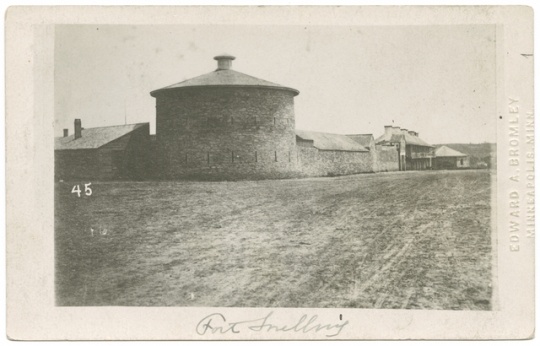
Fort Snelling exterior
Public domain
Holding Location
More Information

Dr. Thomas R. Potts
Public domain
Holding Location
More Information
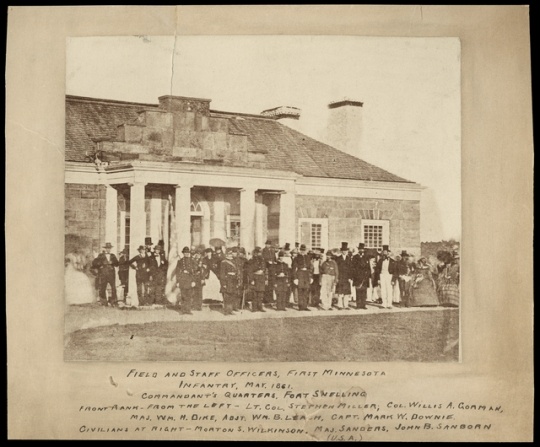
Officers of the First Minnesota Volunteers
Holding Location
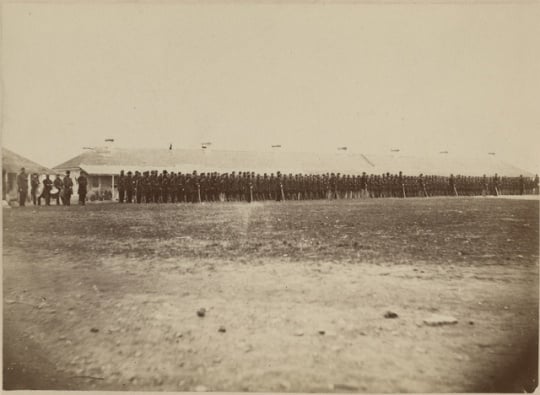
Second Minnesota Volunteer Infantry standing in front of the Long Barracks
Public domain
Holding Location
More Information
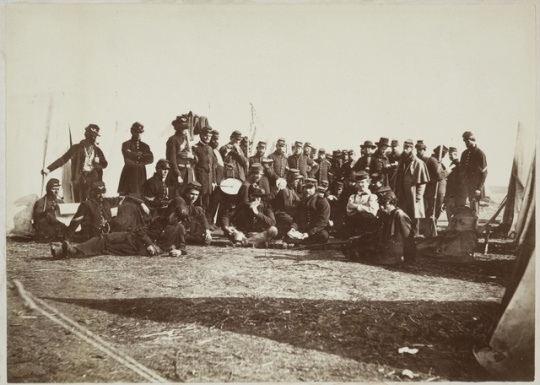
Company E, Eighth Minnesota Volunteer Infantry, Fort Snelling
Public domain
Holding Location
More Information
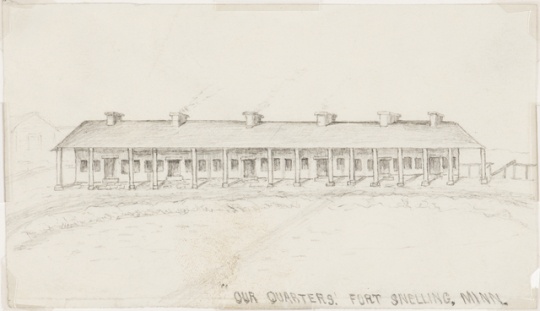
Sketch of Barracks at Fort Snelling
Public domain
Holding Location
More Information
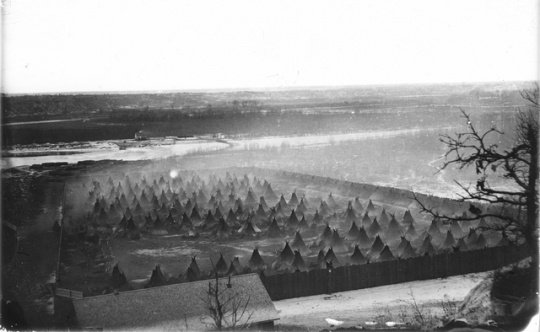
Dakota concentration camp below Fort Snelling
Public domain
Holding Location
More Information
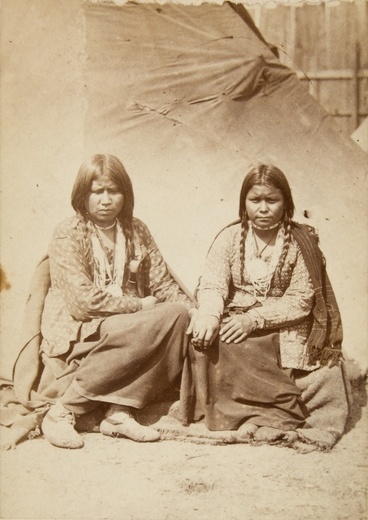
Dakota Women at Fort Snelling concentration camp
Public domain
Holding Location
More Information
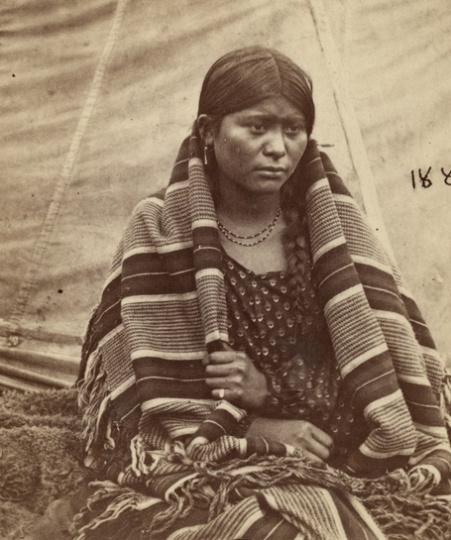
Apistoka at Fort Snelling concentration camp
Public domain
Holding Location
More Information
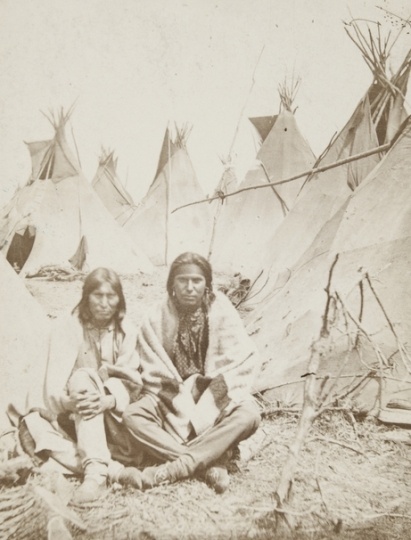
Two Dakota men at the Fort Snelling concentration camp
Public domain
Holding Location
More Information
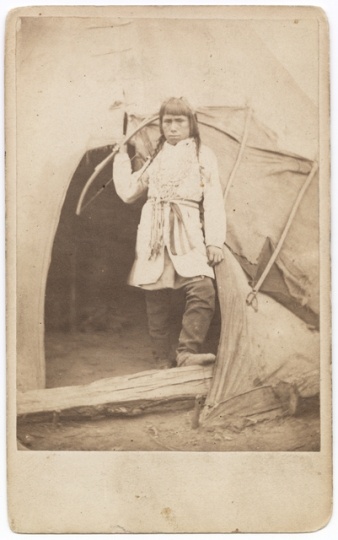
Dakota Boy at Fort Snelling concentration camp
Public domain
Holding Location
More Information
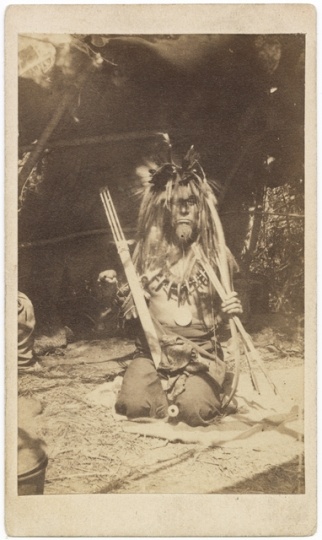
Winneshiek II, Ho-Chunk resistance leader
Public domain
Holding Location
More Information
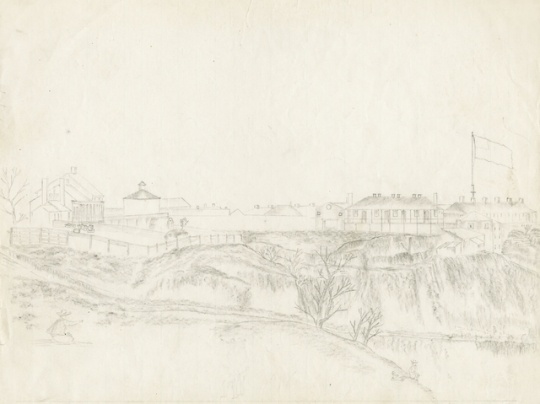
Graphite drawing of Fort Snelling
Public domain
Holding Location
More Information
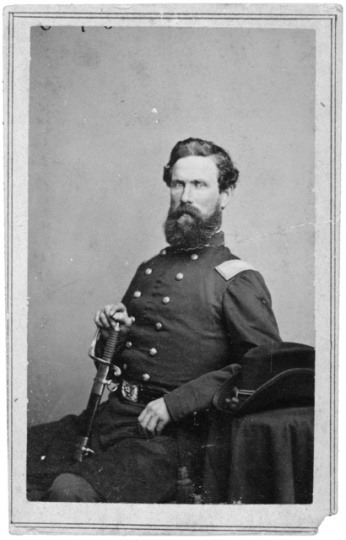
Colonel George N. Morgan
Public domain
Holding Location
More Information
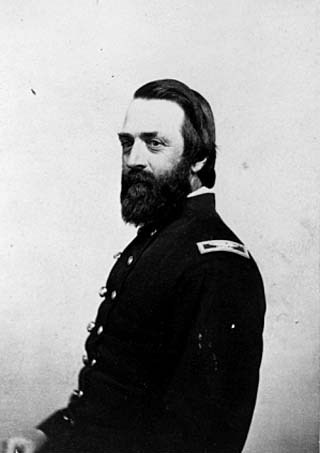
Colonel Robert Neil McLaren
Public domain
Holding Location
More Information
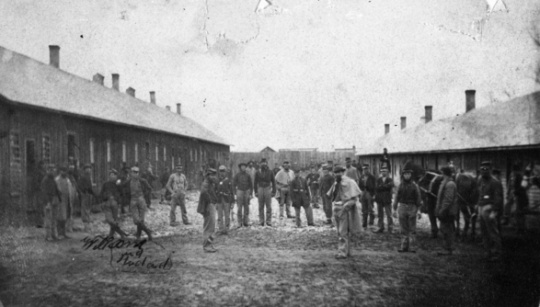
First Minnesota Mounted Rangers at Fort Snelling
Public domain
Holding Location
More Information
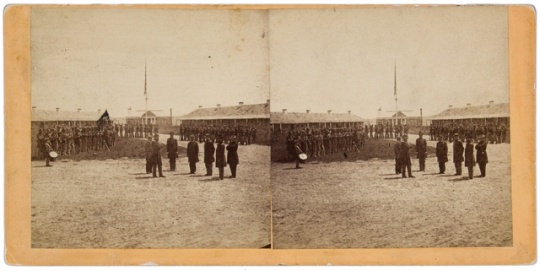
General George N. McLaren reviewing Veteran Reserve Corps troops at Fort Snelling
Public domain
Holding Location
More Information
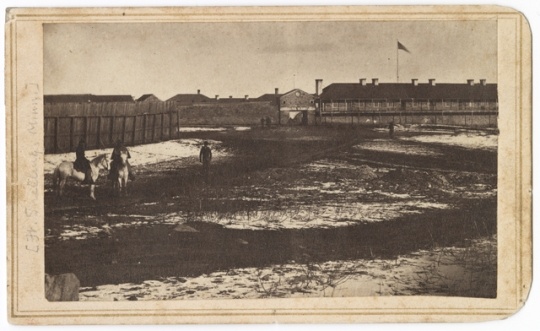
View of the south side of Fort Snelling
Public domain
Holding Location
More Information
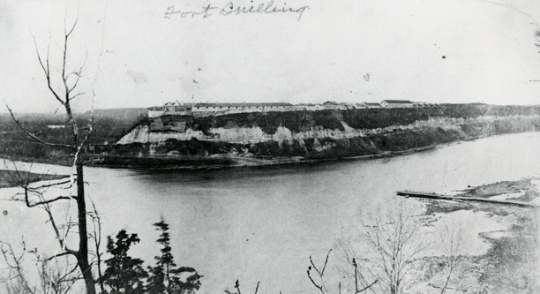
Fort Snelling
Public domain
Holding Location
More Information
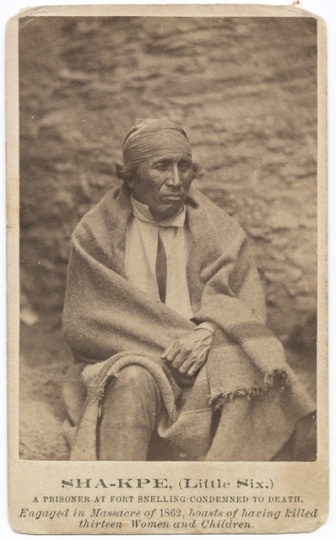
Dakota leader Sakpedan (Little Six, “Shakopee III”) at Fort Snelling
Public domain
Holding Location
More Information
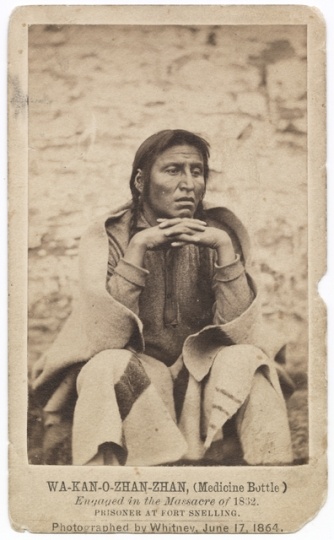
Wakan Ozanzan (Medicine Bottle) at Fort Snelling
Public domain
Holding Location
More Information
Related Articles
Turning Point
On April 13, 1861, Fort Sumter surrenders to Confederate States forces. The next day, Minnesota governor Alexander Ramsey volunteers one thousand men for federal service. Fort Snelling re-opens as an induction and training center for Minnesota recruits.
Chronology
April 29, 1861
August 18, 1862
November 7, 1862
Winter 1862
April 21–22, 1863
May 4, 1863
May 9, 1863
Summer 1863
Late 1863
Summer 1864
August 1864
Summer 1865
November 11, 1865
May 1866
Bibliography
Anderson, Gary Clayton, and Alan R. Woolworth, eds. Through Dakota Eyes: Narrative Accounts of the Minnesota Indian War of 1862. St. Paul: Minnesota Historical Society Press, 1988.
Bachman, Walt. Northern Slave, Black Dakota: The Life and Times of Joseph Godfrey. Bloomington, MN: Pond Dakota Press, 2013.
Beck, Paul N. Columns of Vengeance: Soldiers, Sioux and the Punitive Expeditions, 1863–1864. Norman, OK: University of Oklahoma Press, 2013.
Board of Commissioners, comps. Minnesota in the Civil and Indian Wars, 1861–1865. 2 Vols. St. Paul: Pioneer Press Company, 1899.
Carley, Kenneth. The Dakota War of 1862. 2nd ed. St. Paul: Minnesota Historical Society Press, 2001.
——— . Minnesota in the Civil War. St. Paul: Minnesota Historical Society Press, 2000.
Clemmons, Linda M. Conflicted Mission: Faith, Disputes, and Deception on the Dakota Frontier. St. Paul: Minnesota Historical Society Press, 2014.
Clodfelter, Michael. The Dakota War: The United States Army Versus the Sioux, 1862–1865. Jefferson, NC: McFarland, 1998.
A/.S814 and A/+S814
Franklin Steele Papers, 1839–1888
Manuscript Collection, Minnesota Historical Society, St. Paul
Description: Correspondence and financial records of Fort Snelling sutler and Minnesota businessman, Franklin Steele.
Historic Fort Snelling. The Civil War (1861–1865).
http://www.historicfortsnelling.org/history/military-history/civil-war
Historic Fort Snelling. US-Dakota War of 1862.
http://www.historicfortsnelling.org/history/us-dakota-war
Monjeau-Marz, Corinne. The Dakota Indian Internment at Fort Snelling, 1862–1864. St. Paul: Prairie Smoke Press, 2006.
——— , and Stephen E. Osman. “What You May Not Know About the Fort Snelling Indian Camps.” Minnesota’s Heritage, No. 7 (January 2013): 112–133.
Millikan, William. “The Great Treasure of the Fort Snelling Prison Camp.” Minnesota History 62, no. 1 (Spring 2010): 4–17.
http://collections.mnhs.org/MNHistoryMagazine/articles/62/v62i01p004-017.pdf
Newson, Mary Jeannette. “Memories of Fort Snelling in Civil War Days.” Minnesota History 15, no. 4 (December 1934): 395–404.
http://collections.mnhs.org/MNHistoryMagazine/articles/15/v15i04p395-404.pdf
Osman, Stephen E. “Flesh and Blood Can Only Stand So Much: Doctor Potts Examines the Recruits.” Minnesota’s Heritage, no. 5 (January 2012): 73.
——— . "General Sibley's Contraband Teamsters." Minnesota's Heritage, No. 7 (January 2013): 54–74.
The US-Dakota War of 1862.
https://www3.mnhs.org/usdakotawar
Editor’s Note: See the US-Dakota War timeline and Oral History Project, which contains interviews with descendants of Dakota survivors.
United States Holocaust Memorial Museum. Holocaust Encyclopedia, Concentration Camps, 1933–1939.
https://www.ushmm.org/wlc/en/article.php?ModuleId=10005263
United States Office of Indian Affairs. Census of Dakota Indians Interned at Fort Snelling After the Dakota War in 1862. Washington, D.C.: United States Office of Indian Affairs, [1862].
United States War Department. Revised Regulations of 1861. Washington, D.C.: Government Printing Office, 1863.
Wingerd, Mary. North Country: The Making of Minnesota. Minneapolis: University of Minnesota Press, 2010.
Related Resources
Primary
Canku, Clifford, and Michael Simon. The Dakota Prisoner of War Letters: Dakota Kaskapi Okicize Wowapi. St. Paul: Minnesota Historical Society Press, 2013.
P2857
Civil War Letters, 1862–1865
Manuscript Collection, Minnesota Historical Society, St. Paul
Description: Letters of Elijah Langley Clark, who served in the Eighth Minnesota Volunteer Infantry Regiment. Clark was intermittently stationed at Fort Snelling from 1862 to 1864.
P939
Collins, George E. Letter, 1861
Manuscript Collection, Minnesota Historical Society, St. Paul
Description: Letter written from Fort Snelling by recruit George Collins. The letter contains brief remarks about life at the fort.
A/.P871
Thomas R. Potts Papers, 1843–1869
Manuscript Collection, Minnesota Historical Society, St. Paul
Description: Ledgers and miscellany of Dr. Potts, who served as acting assistant surgeon and medical purveyor at Fort Snelling during the Civil War.
United States War Department. The War of the Rebellion: A Compilation of the Official Records of the Union and Confederate Armies. 70 vols. in 128 parts. Washington, D.C.: Government Printing Office, 1880-1901.
http://archive.org/details/warrebellionaco17offigoog
P1948
William H. Van Kleeck Diaries, 1864–1865
Manuscript Collection, Minnesota Historical Society, St. Paul
Description: Van Kleeck enlisted at Fort Snelling as Commissary Sergeant in the Eleventh Minnesota Infantry Regiment. The first part of his diary describes enlistment and everyday duties at the fort.
Secondary
Anderson, Gary Clayton. Kinsmen of Another Kind: Dakota–White Relations in the Upper Mississippi Valley, 1650–1862. St. Paul: Minnesota Historical Society Press, 1997.
——— . Little Crow: Spokesman for the Sioux. St. Paul: Minnesota Historical Society Press, 1986.
























